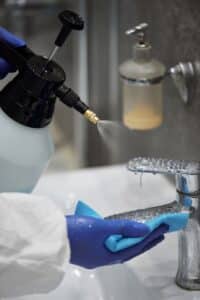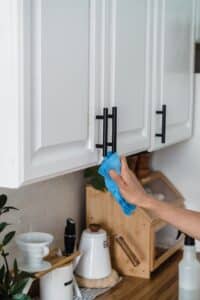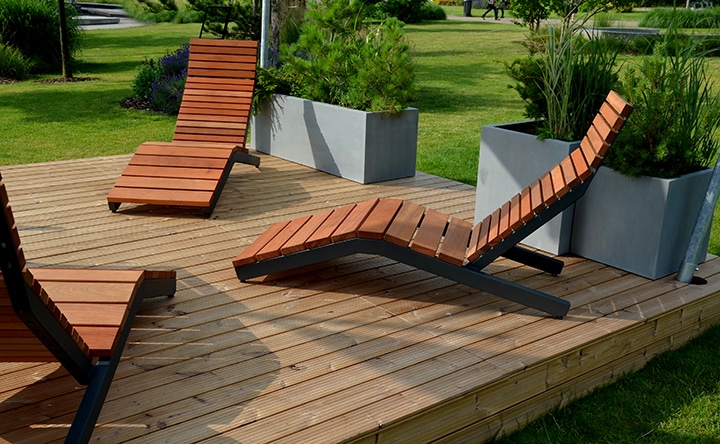
Deck Cleaning Do’s and Don’ts
Table of Contents
When you think about cleaning your home, whether seasonal or because you’re moving, you often forget about the deck. Maintaining and cleaning your deck is essential for lengthening its life. Let’s look at the two main types of decking – wooden and composite – and check out the best ways to keep them clean.
Wood Decks
Wooden decking is the most common material used to build a deck. Pressure-treated pine is the most typical type of wood used in deck building, and occasionally, builders use cedar or Brazilian ipê. Cleaning and maintaining a wood deck is necessary for keeping your deck in tip-top shape. An annual cleaning protects your deck against harsh weather, mildew, and mold. Also, not waterproofing the underside of your deck properly from rain will cause it to rot.

Composite Decks
In the past several decades, composite decking, like Trex, has become very popular. Composite decking is made from recycled plastic with wood filler and is stainable, durable, and low maintenance. However, a composite deck still has an underside made of wood, so don’t forget to protect the deck’s support structure from moisture.
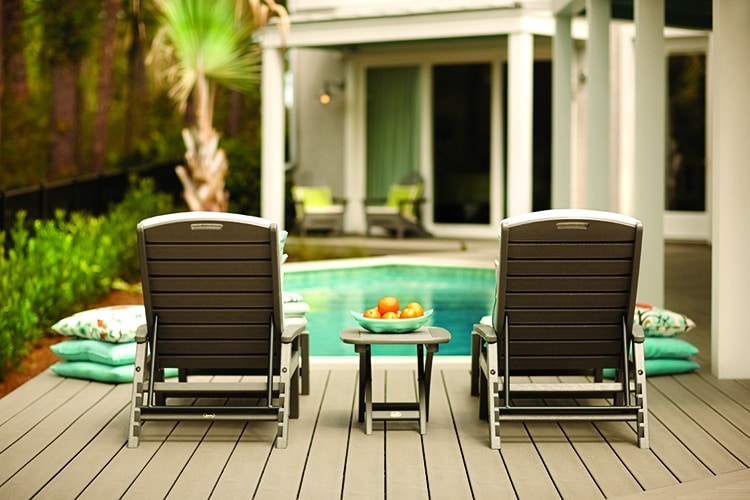
Cleaning Your Deck
Generally, springtime is the best time to clean your deck. After winter is over and the weather gets warmer, pick a nice day when it’s around 60 to 70°F. Start by removing any deck furnishings or planters, and don’t forget the grill! Sweep thoroughly and clean between the deck boards to remove grit and grime. A small putty knife might help to get debris (such as pine needles) out from hard-to-reach places.
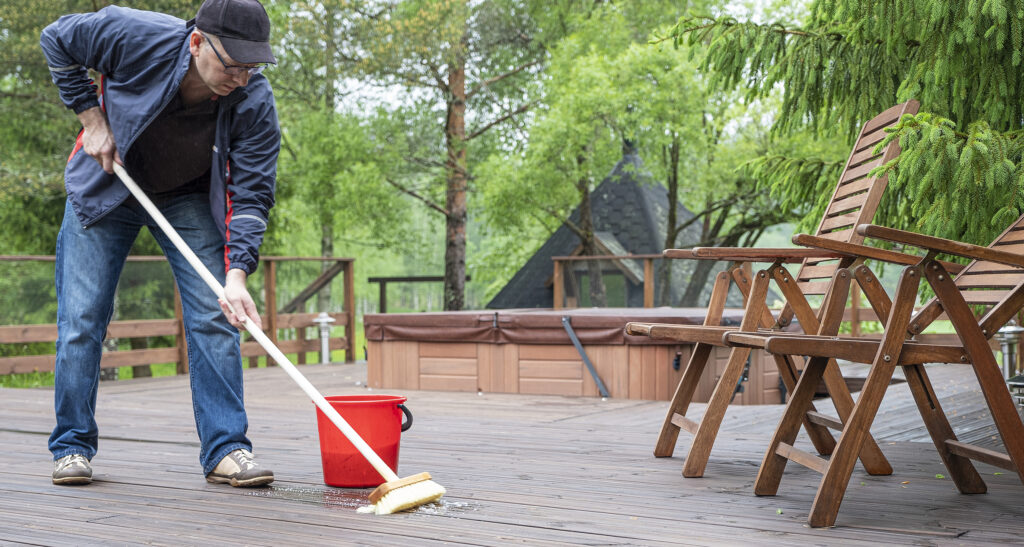
Once the deck is cleared and swept, it’s time to focus on any problem spots. Is there any mildew buildup? Do you feel soft wood? Check your deck joists, beams, ledger board, and any areas where moisture can get trapped. Replace any rotted wood with new boards.
Homemade vs. Commercial Cleaner
You’ve got a couple of choices here. While some excellent deck cleaning solutions are on the market, it’s possible to make a homemade cleaner with vinegar, baking soda, and dishwashing detergent! Depending on your cleaning needs, you can customize your homemade mixture with various ingredients. Whether you decide to use a DIY cleaner or purchase a store-bought one, the cleaning methods will be the same.
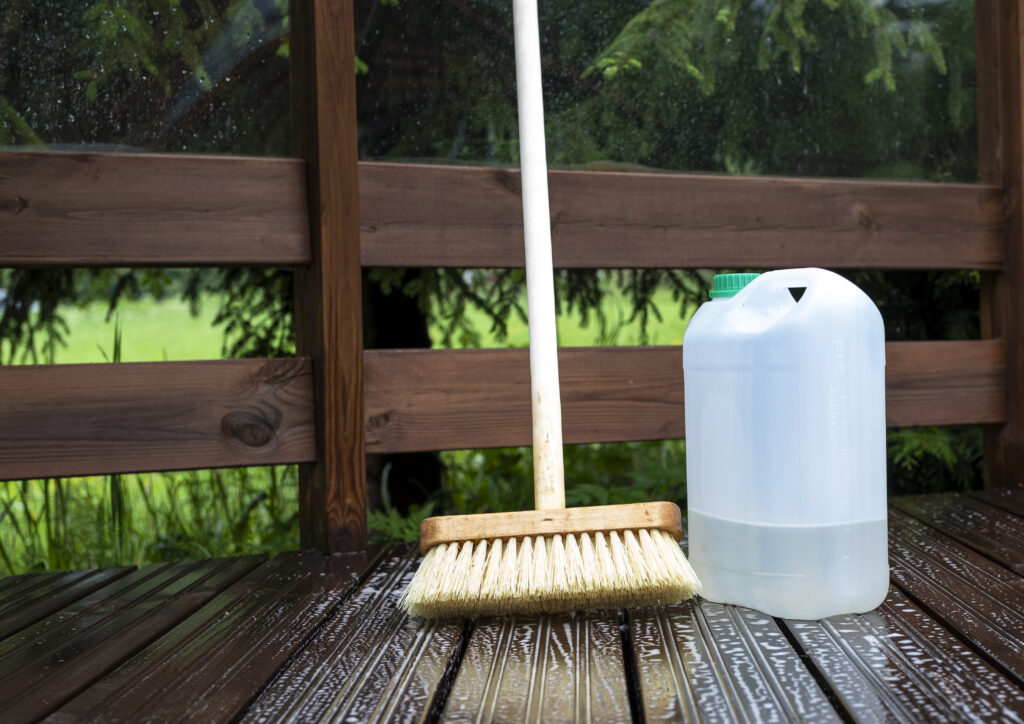
Start with a long-handled scrub brush. Rinse your deck using the hose. A spray nozzle will work well, but if you decide to use a pressure washer, make sure it’s set on a lower setting, below 3100 p.s.i. Hold it about eight inches above your deck’s surface. Failure to do this can scar your deck boards. Once you have scrubbed off stains and grime, thoroughly rinse off your deck and let it completely dry. Drying usually takes about 24 to 48 hours, depending on weather conditions and humidity.
Sealing and Staining
There are several things to consider if you’re considering staining or sealing your wood deck. Do sand your deck first to get out any rough spots. Sealing a composite deck is not necessary.
Sealing your deck is good protection from the elements. It prevents warping and cracking. In wetter climates, sealing is a must. A quality clear seal will repel water and help your deck withstand rain, ice, and snow.
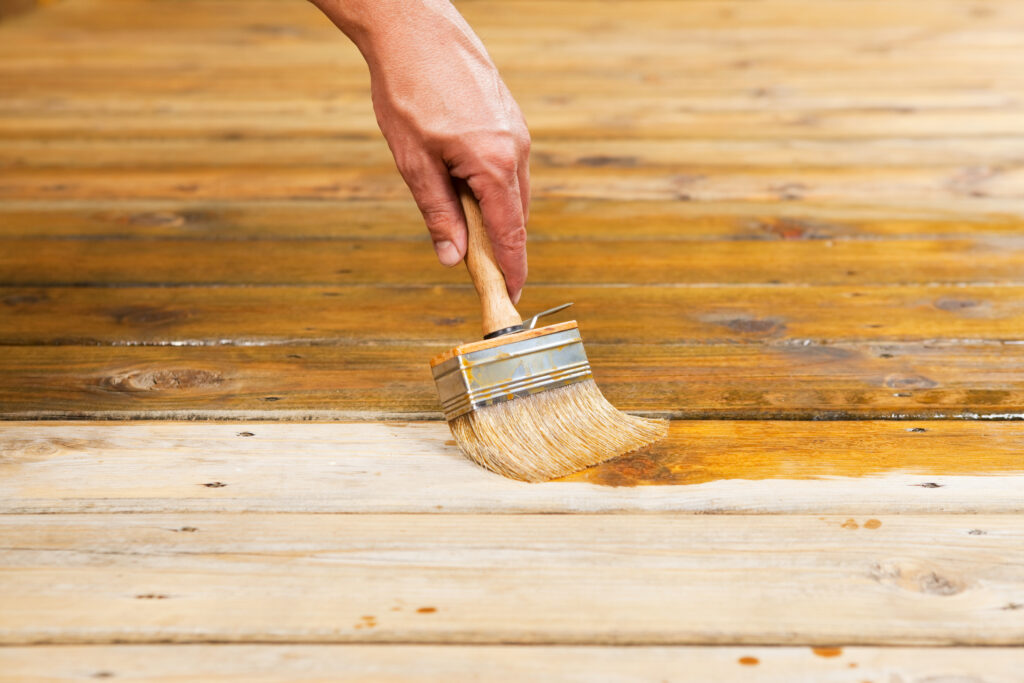
Are you thinking about applying a stain? Again, composite decking doesn’t require staining. Deck stains will help thwart UV damage. Stains can be tinted or translucent. The deeper the color of the stain, the more sun protection it provides. There’s a slight difference between painting and staining, so it’s important to do some research in planning these steps.
In Conclusion
You want to have the best protection for your investment. Homeowners with decks, whether wood or composite, need to make sure they do routine maintenance on their decks.
Do:
- Perform regular checks on your deck to include all hardware, support beams, joints, and the condition of surface wood or surface composite.
- Do a thorough cleaning each year, then seal your wood deck.
- Consider staining or painting your deck if desired. Ensure you know the differences between painting, staining, and sealing.
Don’t:
- Forgo cleaning your deck and regularly checking for potential issues.
- Think that a little bit of mold won’t lead to bigger problems.
- Fail to protect your deck’s substructure from water and moisture getting trapped between boards that can lead to structural issues.
You have a beautiful addition to the outdoor area of your house. Keep this area clean, well-maintained, and waterproofed so you can enjoy your deck for a long time.

